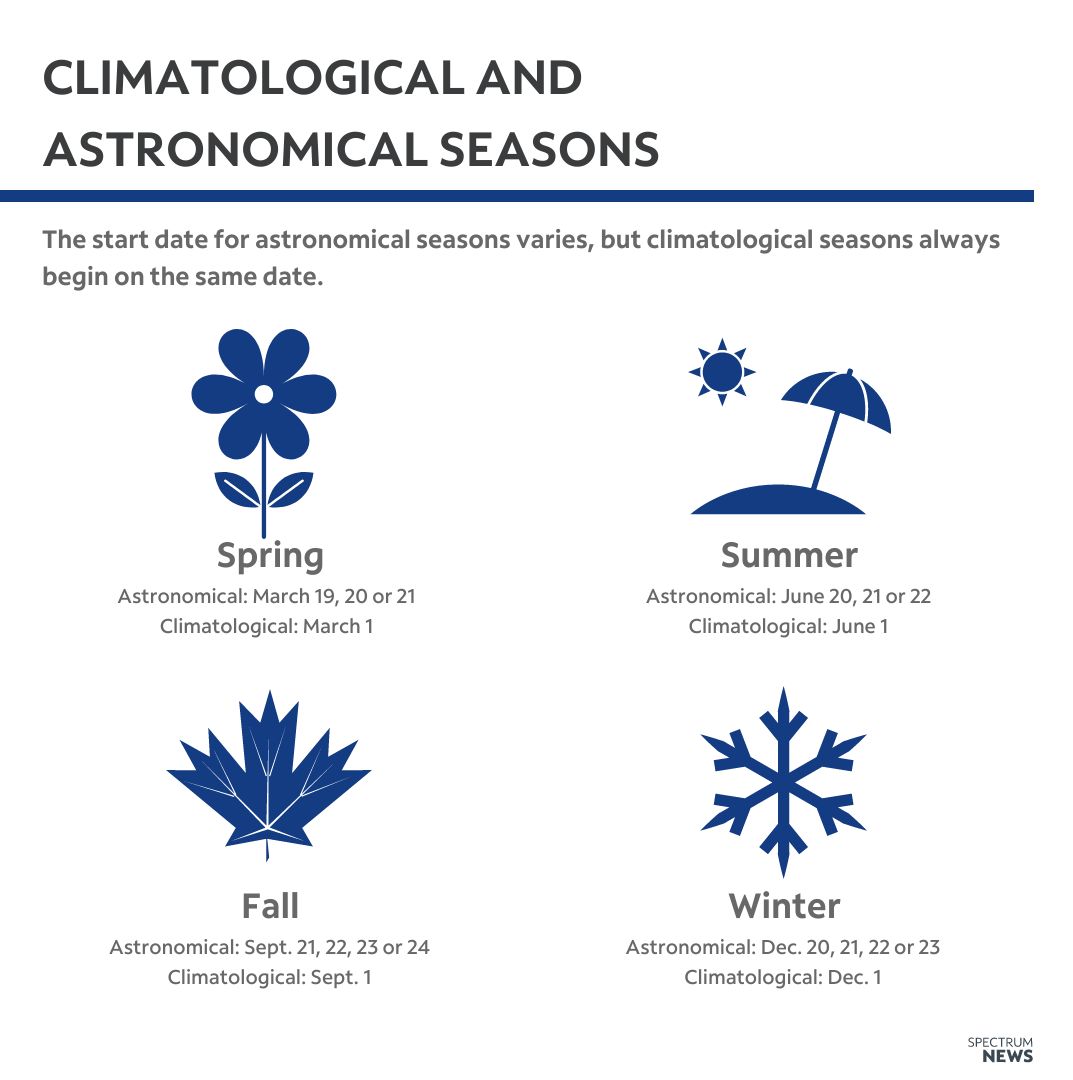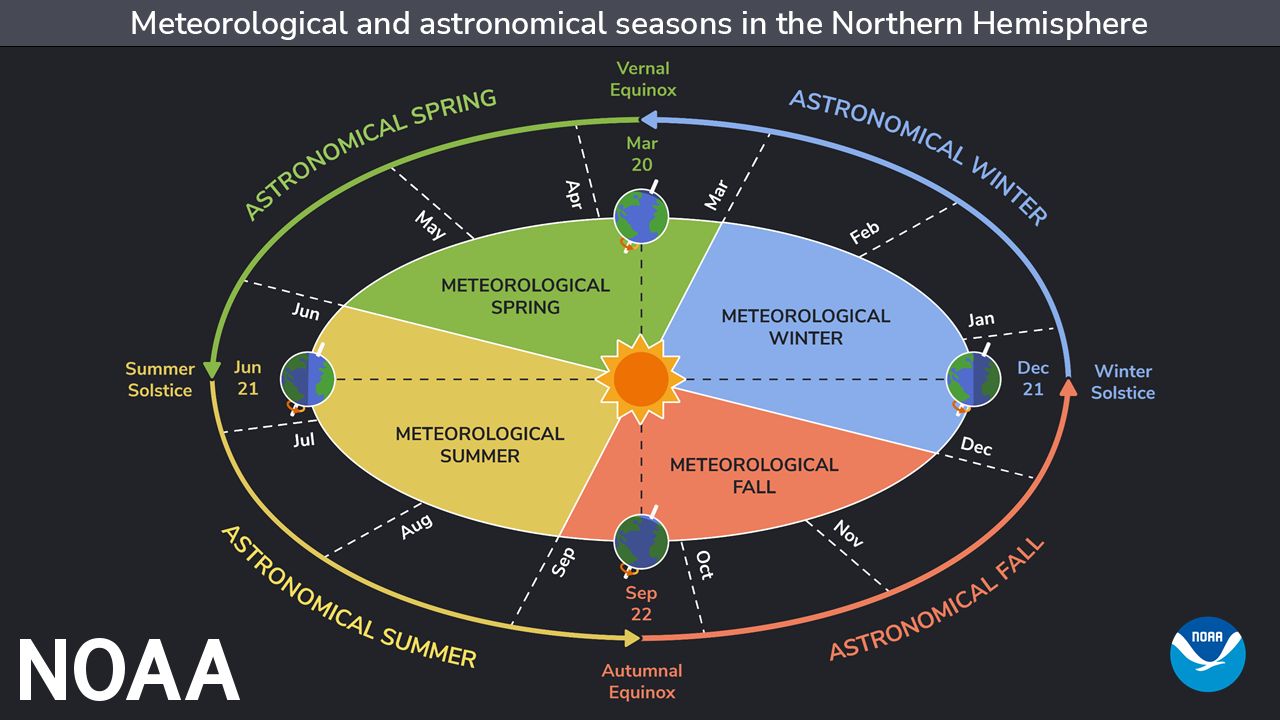Spring, summer, fall and winter–we all have the same seasons, but meteorologists and climatologists look at them a little differently than others.
The Earth’s tilt on its axis gives us our seasons. In the Northern Hemisphere, the spring and fall equinoxes happen when the sun’s direct rays pass over the Equator. They’re farthest north on the summer solstice as we lean toward the sun. On the winter solstice, they reach their southernmost point while we lean away from the sun.
(NOAA Office of Education/Kaleigh Ballantine)
Our planet’s movement is predictable, but it isn’t perfect. Astronomical seasons start around the same time, but the exact date varies. As a result, each season can be anywhere from 89 to 93 days long.
That would make record-keeping for weather and climate tricky. Making comparisons between years isn’t quite apples-to-apples if the start and length of a season change each year.
That’s why we have climatological seasons. They always start on the first day of a particular month and only vary between 90 and 92 days long.

It also turns out that the warmest and coldest 91-day periods of the year line up better with climatological summer and winter.
While the “official” start of the seasons are the astronomical ones, you can use the two to your advantage. Can’t wait for spring or summer to start? Go with the earlier dates of the climatological seasons. In denial about longer nights and colder weather as winter approaches? Push off reality with the later date for astronomical winter.
Our team of meteorologists dives deep into the science of weather and breaks down timely weather data and information. To view more weather and climate stories, check out our weather blogs section.

